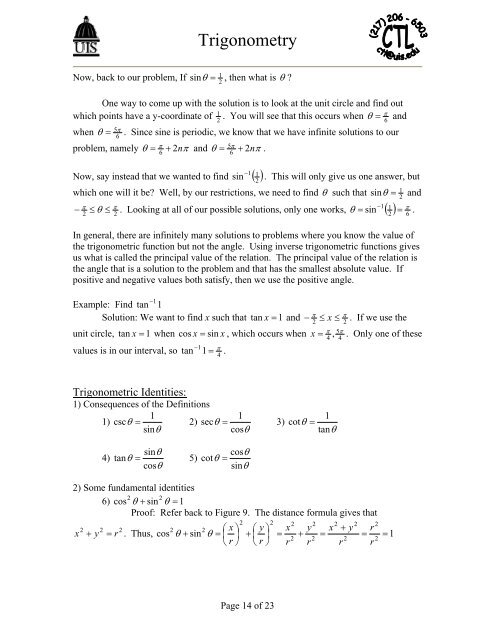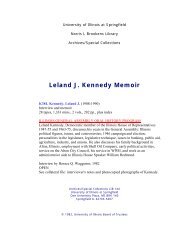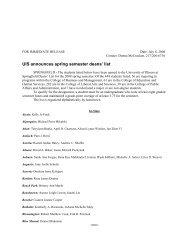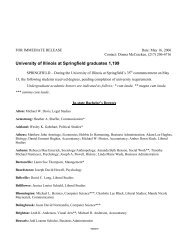Trigonometry Handout
Trigonometry Handout
Trigonometry Handout
You also want an ePaper? Increase the reach of your titles
YUMPU automatically turns print PDFs into web optimized ePapers that Google loves.
<strong>Trigonometry</strong><br />
Now, back to our problem, If<br />
1<br />
sin θ = , then what is θ ?<br />
2<br />
One way to come up with the solution is to look at the unit circle and find out<br />
which points have a y-coordinate of 1 π<br />
2<br />
. You will see that this occurs when θ = and<br />
6<br />
5π<br />
when θ = . Since sine is periodic, we know that we have infinite solutions to our<br />
6<br />
problem, namely θ = π + 2 nπ<br />
and θ 5 π<br />
= + 2n<br />
π .<br />
6 6<br />
1<br />
Now, say instead that we wanted to find (<br />
1<br />
sin − )<br />
. This will only give us one answer, but<br />
2<br />
1<br />
which one will it be? Well, by our restrictions, we need to find θ such that sin θ = and<br />
2<br />
π π<br />
−1<br />
− ≤ θ ≤ . Looking at all of our possible solutions, only one works, (<br />
1<br />
)<br />
π<br />
θ = sin =<br />
2 2<br />
2 6<br />
In general, there are infinitely many solutions to problems where you know the value of<br />
the trigonometric function but not the angle. Using inverse trigonometric functions gives<br />
us what is called the principal value of the relation. The principal value of the relation is<br />
the angle that is a solution to the problem and that has the smallest absolute value. If<br />
positive and negative values both satisfy, then we use the positive angle.<br />
Example: Find tan −1<br />
1<br />
π π<br />
Solution: We want to find x such that tan x = 1 and − ≤ x ≤ . If we use the<br />
2 2<br />
5<br />
unit circle, tan x = 1 when cos x = sin x , which occurs when x =<br />
π , π . Only one of these<br />
4 4<br />
−<br />
values is in our interval, so 1 π<br />
tan 1 = .<br />
4<br />
.<br />
Trigonometric Identities:<br />
1) Consequences of the Definitions<br />
1<br />
1<br />
1) csc θ = 2) sec θ = 3)<br />
sinθ<br />
cosθ<br />
cot θ =<br />
1<br />
tanθ<br />
4)<br />
sinθ<br />
tan θ = 5)<br />
cosθ<br />
cosθ<br />
cot θ =<br />
sinθ<br />
2) Some fundamental identities<br />
2 2<br />
6) cos θ + sin θ = 1<br />
Proof: Refer back to Figure 9. The distance formula gives that<br />
2 2 2<br />
2 2 ⎛ x ⎞ ⎛ y ⎞ x y x + y r<br />
x + y = r . Thus, cos θ + sin θ = ⎜ ⎟ + ⎜ ⎟ = + = = = 1<br />
2 2 2 2<br />
⎝ r ⎠ ⎝ r ⎠ r r r r<br />
2<br />
2<br />
2<br />
2<br />
2<br />
2<br />
2<br />
Page 14 of 23

















